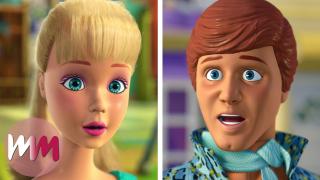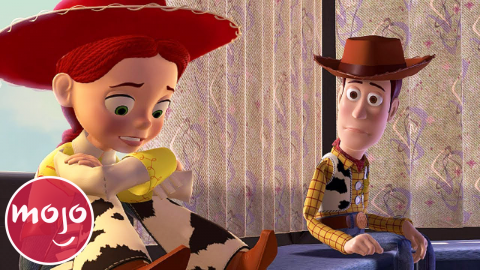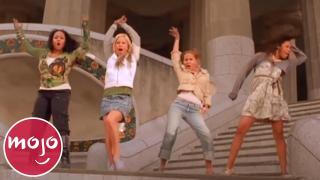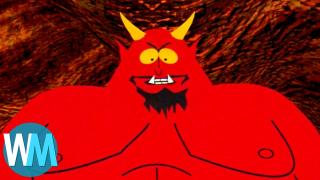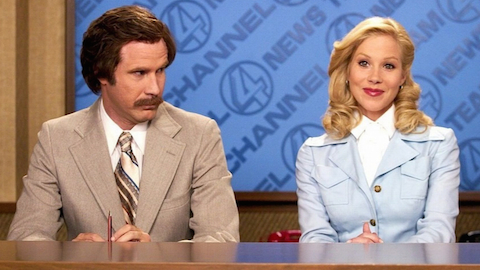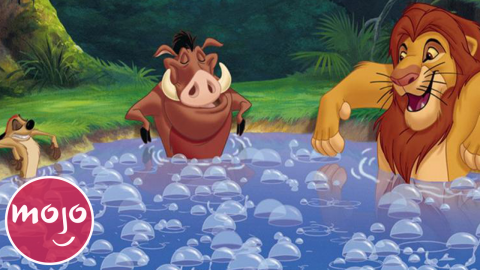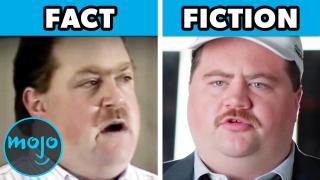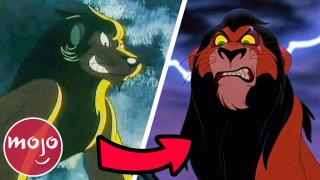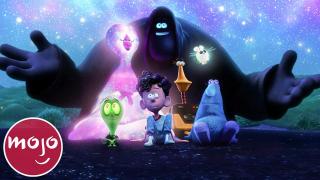Top 10 Biggest Animated Movie Scandals
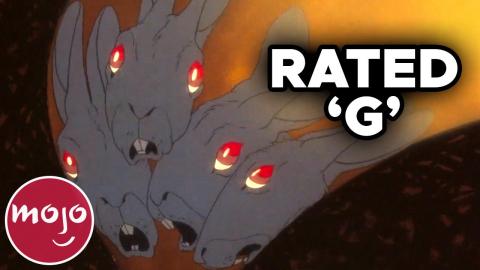
#10: The BBFC Rating “Watership Down” (1978)
Top 10 Biggest Animated Movie Clichés
Don’t let the cute rabbits deceive you. This adaptation of Richard Adams’ novel warrants comparison to a war picture with its disturbing imagery. Predating the PG-13 rating, the MPA rated the film PG, which felt fitting for 1978. The BBFC, however, gave “Watership Down” a U for Universal, the equivalent to a G. The board decided that the film “could not seriously trouble [children] once the spell of the story is broken and a ‘U’ certificate was therefore quite appropriate.” Well, it did “seriously trouble” some. In 2012, the board acknowledged that they had received complaints almost annually since. Four years later, BBFC director David Austin said that the film was “arguably too strong” for modern U criteria and it “would be rated PG today.”
#9: The Crows Ruffle Feathers “Dumbo” (1941)
Top 10 Most Heartbreaking Animated Movie Moments
Upon release, “Dumbo” was almost universally praised. In recent years, though, the animated classic has been a subject of scandal, namely due to the crow characters. Although Disney once prominently featured the crows on the VHS art, the company has since reevaluated the characters with many perceiving them as negative African-American stereotypes. Cliff Edwards, a white actor, voiced the lead crow, “Jim Crow,” a name linked to minstrelsy and racial segregation laws. While the other crows are voiced by African-Americans, their dialogue hasn’t aged spectacularly. Some have defended the crows since they empathize with Dumbo and give him the confidence to fly. Still, it’s not surprising the crows were omitted from Tim Burton’s live-action remake with the original film receiving a warning on Disney+.
#8: Original “Arabian Nights” Lyrics “Aladdin” (1992)
Top 10 Rewatched Disney Channel Original Movie Moments
“Aladdin” was 1992’s highest-grossing movie and remains one of Disney’s most beloved animated films. However, the American-Arab Anti-Discrimination Committee had a few qualms with Disney’s take on the Arabic folktale. They were especially offended by a lyric from the opening song, “Arabian Nights.” If you saw “Aladdin” when it first hit theaters or still own the original soundtrack, you might’ve noticed that the singer said, “Where they cut off your ear if they don’t like your face.” The complaints surrounding this line didn’t fall on deaf ears. Disney would change the lyrics for almost every future release, starting with the 1993 VHS. While easy to miss, the singer’s voice becomes noticeably deeper when the new lyrics come up in the edited version.
#7: Poor Working Conditions “Sausage Party” (2016)
How Emma Stone Prepared to Play Bella Baxter in Poor Things
The onscreen food may look delicious, but “Sausage Party” was an outrageous exercise in bad taste. As obscene as some of the film’s imagery is, it wasn’t the content that landed Nitrogen Studios and co-director Greg Tiernan in hot water. It was because of how the animators were reportedly treated. On Cartoon Brew, several anonymous commenters alleged that the film’s animators were forced to work overtime with no extra compensation. Many decided to quit at the risk of going uncredited and getting blacklisted. Outlets like Variety would dig deeper into the story, finding that these statements lined up with reports from other anonymous sources. Three years later, the British Columbia Employment Standards Branch ruled in favor of the artists who hadn’t received overtime pay.
#6: Hell Breaks Loose Over Rating “South Park: Bigger, Longer & Uncut” (1999)
Top 10 Depictions of Hell in Movies
How ironic that a film about profanity and censorship would result in an ongoing struggle with the MPA. Trey Parker and Matt Stone even received flak about the original title, “All Hell Breaks Loose.” They thus changed it to “Bigger, Longer & Uncut,” which was a lot more suggestive, but the MPA wouldn’t notice the naughty undertones until it was too late. As for the film itself, the MPA gave it an NC-17 rating five times primarily due to the language, although the violence wasn’t a huge issue. The filmmakers eventually achieved the R rating that the studio wanted, but MPA president Jack Valenti subsequently expressed regret about not rating it NC-17. The film ultimately got away with 399 swear words, breaking a Guinness World Record.
#5: Battle of the Bugs “Antz” (1998) & “A Bug’s Life” (1998)
Top 10 Movie Battle of the Sexes
1998 gave us two computer-animated films about talking bugs, both featuring a social outcast and a princess. Who had the idea first, Pixar or DreamWorks? Well, it’s complicated. During Jeffrey Katzenberg’s Disney days, a film entitled “Army Ants” was pitched. Katzenberg claims that the idea for “Antz” stemmed from director Tim Johnson while others give Dreamworks executive Nina Jacobson credit. In any case, Katzenberg knew that Pixar was developing an insect film, then-titled “Bugs,” when he gave “Antz” the go-ahead. Disney retaliated by planning to release “A Bug’s Life” against DreamWorks’ “The Prince of Egypt.” Katzenberg responded by pushing back “Prince’s” premiere and releasing “Antz” ahead of “Bug’s Life.” While both bug films found success critically and financially, Pixar and DreamWorks were now officially rivals.
#4: The Disney Defectors “The Fox and the Hound” (1981)
Top 10 Underrated Disney Animated Movie Sequels
Before DreamWorks was rivaling Disney, Don Bluth was giving the Mouse House a run for their money. Bluth started as a Disney animator, but he became disenchanted with the studio as they became more reliant on cost-cutting measures. Along with fellow animators, Gary Goldman and John Pomeroy (palm-er-oy), Bluth left Disney during the production of “The Fox and the Hound.” Several additional Disney animators subsequently left to join Bluth, forcing the studio to delay “Fox and the Hound” by about six months. Although the press referred to Bluth’s crew as “Disney Defectors,” they won over critics with their first feature, “The Secret of NIMH.” While not a huge moneymaker, many felt “NIMH” recaptured the spark missing from Disney’s recent offerings, upping the standards for animation.
#3: Richard Williams Robbed “The Thief and the Cobbler” (1993)
Top 10 Things Richard Jewell Got Factually Right and Wrong
After nearly three decades of trying to complete his passion project, Richard Williams finally received support from Warner Bros. Around the same time, though, Disney green-lit “Aladdin,” which shared similar settings, characters, and visuals. They even had a few animators in common. Williams’ reputation for missing deadlines didn’t help. Following a workprint screening, WB gave the film to the Completion Bond Company with Williams getting booted off. “The Thief” only changed more in 1994 when Miramax, then owned by Disney, acquired the rights. Under Harvey Weinstein’s supervision, “The Thief” became an “Aladdin” clone entitled “Arabian Knight.” The fan restoration, “The Recobbled Cut,” strived to restore Williams’ original vision and the Academy has preserved Williams’ unfinished version. Alas, Williams never got to finish his magnum opus.
#2: My, Oh, My… “Song of the South” (1946)
Top 10 Biggest Disney Scandals
Due to its depictions of race, this live-action/animated hybrid has firmly etched out its place as Disney’s most controversial feature. Even when it was first released, “Song of the South” wasn’t a stranger to backlash. NAACP executive secretary Walter Francis White released a statement that complimented the film’s “artistic merit,” but claimed the story presented “an idyllic master–slave relationship.” Although White hadn’t actually seen the film, he received reports from two NAACP members who went to a press screening. Picket lines were set up at many theaters playing the film with signs reading things like, “We fought for Uncle Sam, not Uncle Tom.” While Uncle Remus actor James Baskett stood by the film, he wasn’t able to attend its premiere in the then-segregated Atlanta. Before we unveil our top pick, here are a few honorable - or dishonorable depending on how you look at it - mentions. Topless Drawing, “The Rescuers” (1977) Still Got an Old VHS? Pop It In, Press Pause, & Be In Disbelief Batman & Batgirl Hook Up, “Batman: The Killing Joke” (2016) Holy Shipping at its Worst, Batman “Let It Go” Lawsuit, “Frozen” (2013) Jaime Ciero Claimed It Ripped Off “Volar,” But He Eventually Let It Go
#1: He’s X Rated & Animated! “Fritz the Cat” (1972)
Why Netflix's Orion and the Dark is the Latest Animated Movie That Makes You Think
Always a rebel of animation, Ralph Bakshi (Ba/uhCK-shee) has made several films that resulted in scandals. For our top pick, we’re singling out his debut feature, “Fritz the Cat.” People have different definitions of what constitutes “adult animation,” but we can all agree that this independent black comedy ain’t for kids. Upon release, “Fritz” became the first animated feature to receive an X rating from the MPA. Bakshi and producer Steve Krantz felt the X rating sent the wrong message with the latter unsuccessfully appealing to the MPA. Although many newspapers wouldn’t review or advertise an X film, Cinemation Industries played up the rating with taglines like “We’re not rated X for nothin’, baby.” The taboo marketing only seemed to help “Fritz,” grossing over $90 million.


